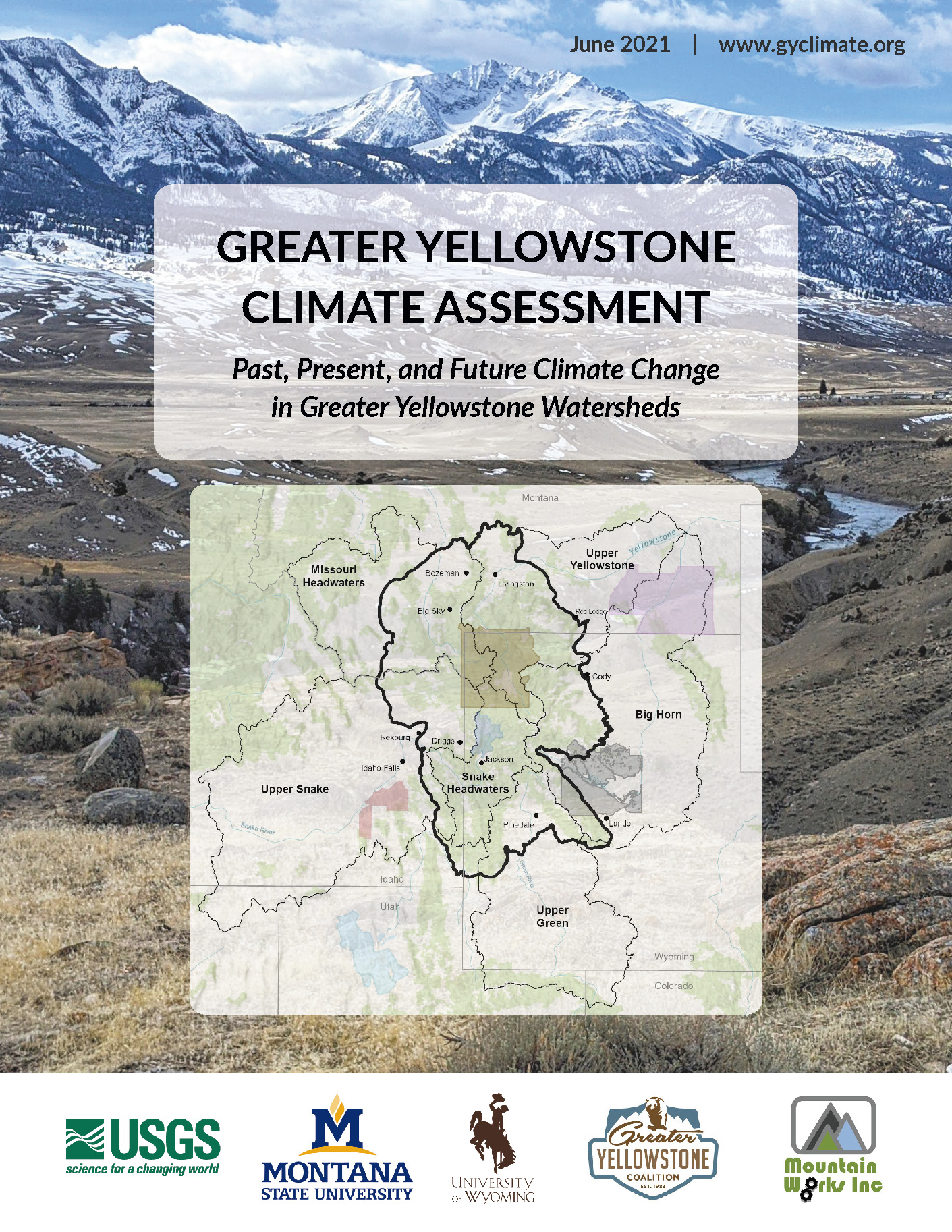Temperature significantly increased and snowfall decreased in the iconic Greater Yellowstone Area since 1950 because of climate change, and these trends will likely continue through the rest of the century, according to a climate report published today. The Greater Yellowstone Area includes the headwaters of the Snake River.
The report can be found here.
Scientists with the U.S. Geological Survey, Montana State University and the University of Wyoming studied climate change in the Greater Yellowstone Area (GYA) from 1950-2018. They evaluated how these changes could progress by 2100 based on various greenhouse gas emission scenarios and found that average GYA temperatures increased by 2.3 degrees Fahrenheit and could increase an additional 5-10 degrees Fahrenheit by 2100.
“Greater Yellowstone is valued for its forests, rivers, fish and wildlife,” said Steve Hostetler, a USGS scientist and co-lead author of the report. “The trend towards a warmer, drier climate described in this study will likely affect ecosystems in the region and the communities that depend on them.”
The report also found that by the end of the century, the GYA could see:
–annual precipitation increase by 9-15%, but the combination of elevated temperatures and higher evaporation rates will likely make future conditions drier in summer;
–reduced soil moisture in the summer months, which will be an additional stress on plant communities that could make drought and wildfires more common;
–40-60 more days per year exceeding 90 degrees Fahrenheit in Bozeman, Montana, and in Jackson, Pinedale and Cody, Wyoming, if there is little to no mitigation of future emissions.
“The assessment is intended to provide the best available science on past, present and future conditions in the GYA so that stakeholders have needed information to plan ahead,” said Cathy Whitlock, Regents Professor Emerita of Earth Sciences at Montana State University and report co-lead author.
The report also documents the effects of climate change on the GYA over recent decades, including:
–average temperature was as high or higher than any period in the last 20,000 years and likely the warmest of the last 800,000 years, according to geologic studies;
— the growing season increased by nearly two weeks since 1950;
— average annual snowfall decreased by 23 inches since 1950 and measurable snow has become rare in June and September.
“The decrease in snow is due to the increase in temperature over time, which caused more precipitation to fall as rain instead of snow,” said report co-author Bryan Shuman, Wyoming Excellence Chair in Geology and Geophysics at the University of Wyoming.
The report also found that earlier snowmelt shifted the peak streamflow eight days earlier since 1925 and reduced water supplies in summer, causing drier summer conditions that contributed to wildfires.
These ecosystem changes can impact people in the region in numerous ways, according to the scientists, including elevated temperatures and summer water shortages that affect agriculture and increased wildfires.
“Based on nearly 50 interviews with community leaders, city officials, agencies, businesses, citizens, ranchers and Tribal leaders, water and the need for more climate information are top concerns for folks in the GYA,” said co-author Charles Wolf Drimal from the Greater Yellowstone Coalition.
The new report is a collaborative effort by scientists, resource managers, non-profit organizations and Tribal communities from Montana, Wyoming and Idaho. For more information on research in the GYA, please visit the USGS Northern Rocky Mountain Science Center, Montana State University and University of Wyoming websites.
— CBB, June 3, 2021, WASHINGTON’S DRAFT LONG-TERM WATER SUPPLY/DEMAND REPORT: BY 2040 LOOK FOR SUBSTANTIAL DECREASE IN COLUMBIA RIVER MAINSTEM FLOWS JULY, AUGUST https://www.www.www.columbiabasinbulletin.org/washingtons-draft-long-term-water-supply-demand-report-by-2040-look-for-substantial-decrease-in-columbia-river-mainstem-flows-july-august/

